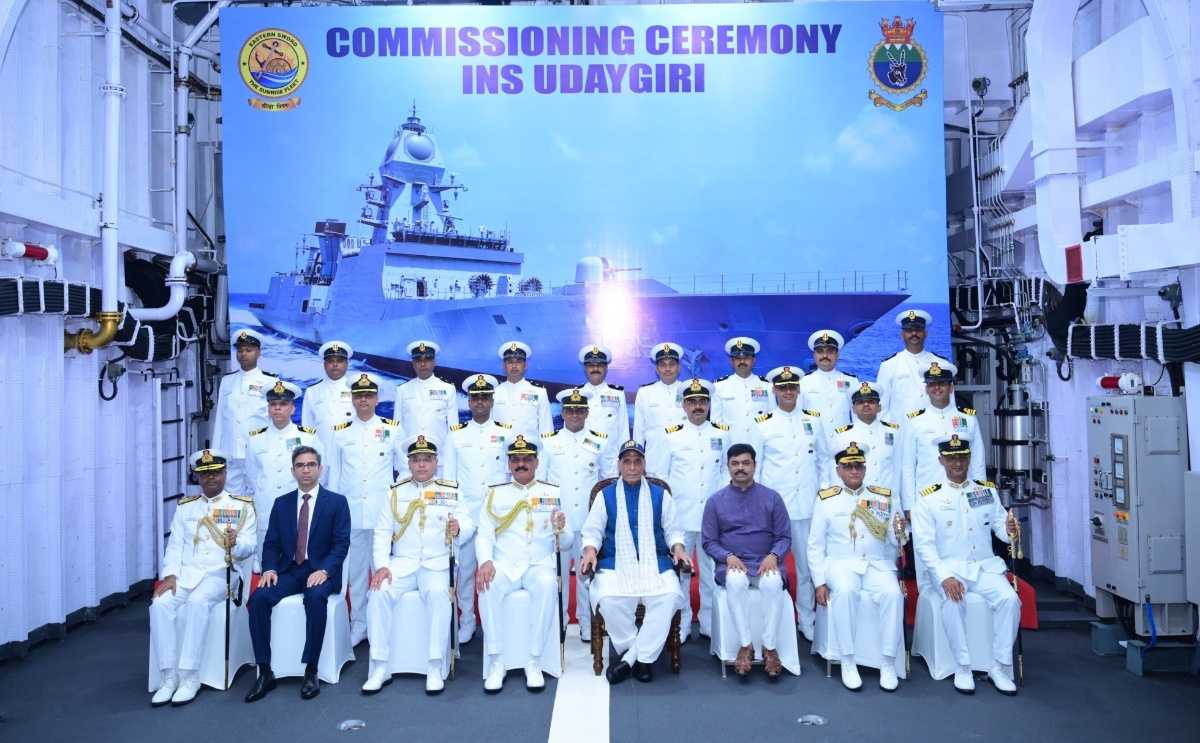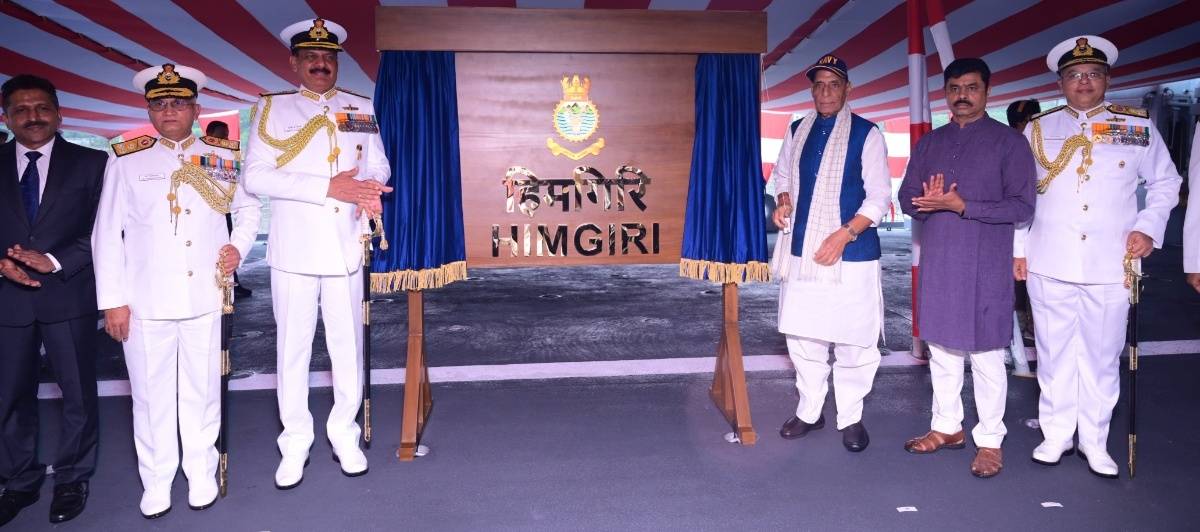INS Udaygiri, INS Himgiri commissioned at Eastern Naval Command
The Indian Navy on Tuesday commissioned two advanced stealth frigates, INS Udaygiri and INS Himgiri, at the Eastern Naval Command in Visakhapatnam. Defence Minister Rajnath Singh presided over the ceremony, which witnessed the simultaneous induction of two frontline surface combatants from different Indian shipyards for the first time in the Navy’s history.
The commissioning marks a milestone in India’s indigenous warship-building capability. With these inductions, the Warship Design Bureau of the Navy has now completed 101 warship designs, all built in Indian shipyards. INS Udaygiri was constructed at Mazagon Dock Shipbuilders Ltd. (MDL), Mumbai, while INS Himgiri was built by Garden Reach Shipbuilders and Engineers (GRSE), Kolkata. Both vessels belong to Project 17A, the advanced successor to the Project 17 (Shivalik-class) frigates, designed to strengthen the Navy’s blue-water capabilities.
Addressing naval personnel, officers, and guests, Mr. Singh described the dual commissioning as “a giant stride towards the realization of Prime Minister Narendra Modi’s vision of Aatmanirbhar Bharat.” He noted that the Navy had crossed a major threshold by ensuring that new frontline warships are built indigenously. “India will no longer rely on foreign shipbuilding,” he said, adding that INS Tamal was the last vessel procured from abroad.

The Minister underlined India’s strategic approach to security in the region. “India does not believe in aggressive expansionism. We never attack any country or provoke anyone. But this doesn’t mean we bow before those who mean to harm us. When our security is threatened, we know how to give a befitting reply,” he said. Referring to Operation Sindoor, launched in response to the Pahalgam civilian killings, he stated that while terrorist hideouts had been neutralised, the operation was still ongoing. “It is not over, it is merely a pause,” he remarked, calling for national unity against terrorism.
Mr. Singh also highlighted the Navy’s increasingly important role as a “first responder” in the Indian Ocean Region. Apart from safeguarding maritime frontiers, he said, the Navy has been at the forefront in tackling piracy, curbing smuggling and trafficking, countering maritime terrorism, and extending humanitarian assistance and disaster relief to countries in the region.

Chief of Naval Staff Admiral Dinesh K. Tripathi called the double commissioning “a clear testimony to the continued progress and dynamic expansion of India’s maritime power.” He praised the high degree of indigenous content in the two frigates—over 75%—which he said represented a significant step towards self-reliance in defence manufacturing. “These multi-mission stealth frigates are fitted with state-of-the-art sensors and weaponry and are designed for versatility in operations across the spectrum of modern naval warfare,” he said.
The 149-metre-long frigates incorporate advanced stealth technology, including reduced radar cross-section, acoustic quieting, and electronic warfare systems. They are equipped with supersonic surface-to-surface missiles, long-range surface-to-air missiles, and a range of anti-submarine weapons. The vessels also feature advanced surveillance radars, rapid-fire gun systems, and integrated platform management systems for centralised control.
With Combined Diesel or Gas (CODOG) propulsion systems, both ships are capable of attaining higher speeds while optimising fuel efficiency. The platforms are designed for multi-role operations, ranging from anti-air and anti-surface warfare to anti-submarine operations, giving them the ability to operate independently or as part of a carrier battle group.
Defence analysts have noted that the induction of INS Udaygiri and INS Himgiri significantly strengthens the Navy’s fleet readiness and expands its operational reach in the Indo-Pacific. The commissioning also reflects India’s growing shipbuilding capacity, with both MDL and GRSE establishing themselves as leading contributors to the Navy’s modernisation programme.
The ceremony concluded with the traditional naval band performance and the hoisting of the Naval Ensign, as the two frigates formally joined the fleet of the Eastern Naval Command, which plays a critical role in safeguarding India’s maritime interests along the eastern seaboard.



